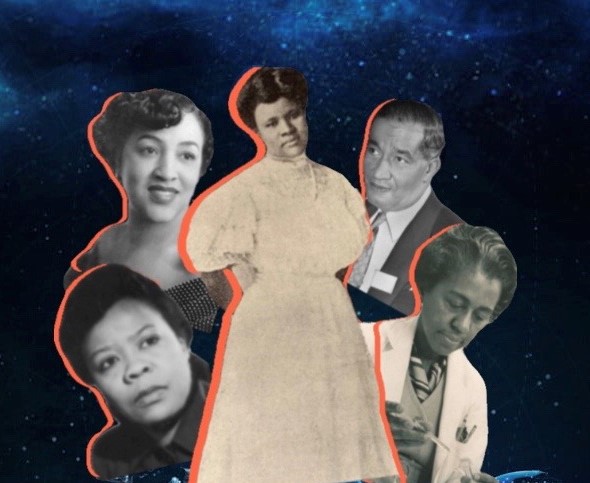Content warning: Anti-Black racism and discrimination
Black people have long been barred from academia and entrepreneurship opportunities due to institutionalized racism and prejudice. In honour of Black History Month, The McGill Tribune highlights notable scientists and inventors who succeeded in making important scientific progress in spite of systemic anti-Black racism.
Madam C.J. Walker (1867-1919)
Walker was one of many Black women afflicted with scalp ailments in the early 20th century. Exposure to harsh lye soap and sulphur, commonplace at the time among laundresses like Walker, contributed to severe hair loss. In 1904, she started working as a sales agent with Annie Turbo Malone, a Black chemist and entrepreneur who designed hair products specifically for Black women. With the help of her four barber brothers, Walker developed a scalp conditioning and healing formula by experimenting with both store-bought and homemade products. She used this to launch her own business and embarked on a successful door-to-door marketing campaign. Walker expanded her line and went on to launch a factory and salon. She employed 40,000 other African-Americans during her lifetime and pursued a wide variety of philanthropic work.
Frederick McKinley Jones (1893-1961)
Despite only having a sixth-grade formal education, Jones received 60 patents over the course of his life, with the majority of his work focussing on long-term refrigeration. Having worked as an automobile mechanic and an electrician, Jones’ first inventions were designed for the motion picture industry such as developing a contraption that combined moving pictures with sound. In 1935, he turned his focus to food transportation, creating a first-of-its-kind system for automatic refrigeration in long-haul trucks. He expanded his work to invent a variety of other devices, including a portable X-ray machine and a mobile air conditioning unit used for blood and medication storage.
Mary Beatrice Davidson Kenner (1912-2006)
Kenner was born to a family of inventors and continued the tradition by patenting five products throughout her life. Although she was accepted to Howard University, she was forced to drop out due to financial barriers. In 1957, she filed a patent for a sanitary belt with a moisture-proof napkin pocket, the design of which inspired modern menstrual pads. Kenner’s opportunity at commercial success was cut short when the company she hoped to work with found out she was Black and rescinded their interest in her products. She continued inventing throughout her life, including a patent for a walker attachment with a serving tray she designed for her sister who had multiple sclerosis.
Marie Maynard Daly (1921-2003)
After graduating magna cum laude with a bachelor’s degree in chemistry from Queens College, Daly decided to pursue graduate education. In 1947 at Columbia University, she became the first African-American woman to obtain a doctorate in chemistry in the U.S. She studied the composition and metabolism of the cell nucleus, and her post-doctoral research on the chemistry of histones provided fundamental discoveries to the field of chromosomal proteins. She was also the first person to identify a relationship between cholesterol and clogged arteries, which was essential in understanding the causes of heart attacks. Daly later became a professor at the Albert Einstein College of Medicine and continued her research until 1987.
Marie Van Brittan Brown (1922-1999)
Born and raised in the neighbourhood of Jamaica in Queens, NYC, Brown often felt unsafe alone in her apartment due to the area’s high level of crime. Building on the closed-circuit television technology of the time, she filed a patent in 1966 for a design involving a series of peepholes in her front door paired with an adjustable remote-controlled camera. A precursor to the modern home security system, her innovation allowed residents to see who was at the door, talk to them via a two-way microphone, and remotely lock or unlock the door. Although the patent was never put to commercial use, it has been cited in numerous other patents since, and Brown later received an award from the National Scientists Committee for her ingenuity.









It is so enlightening to read about these Black Scientists.
Thank you.